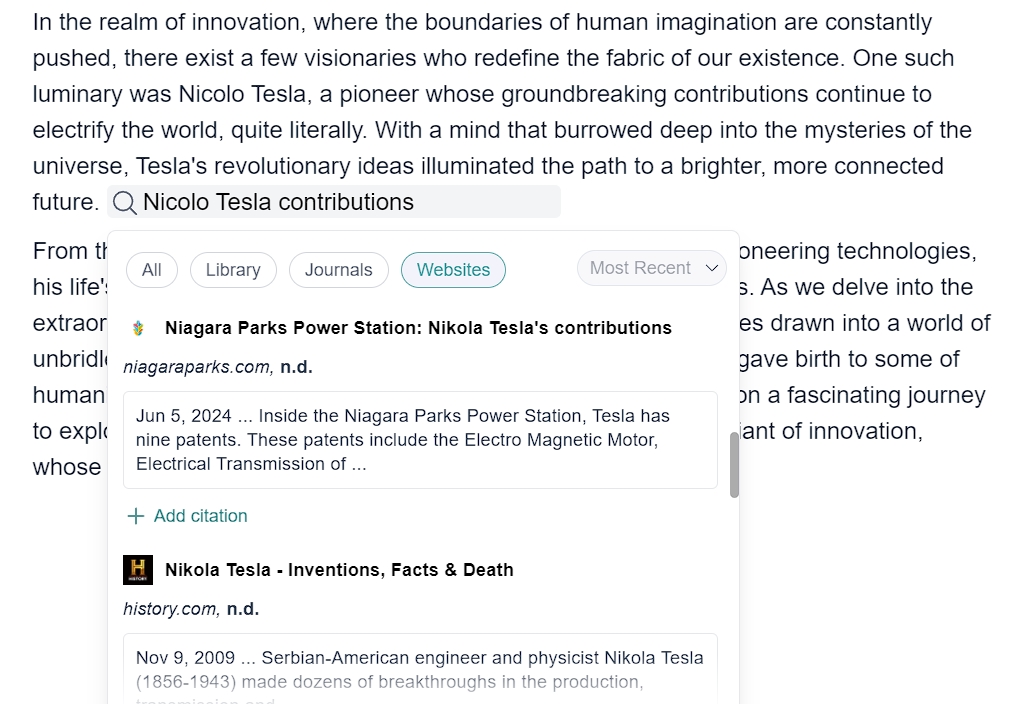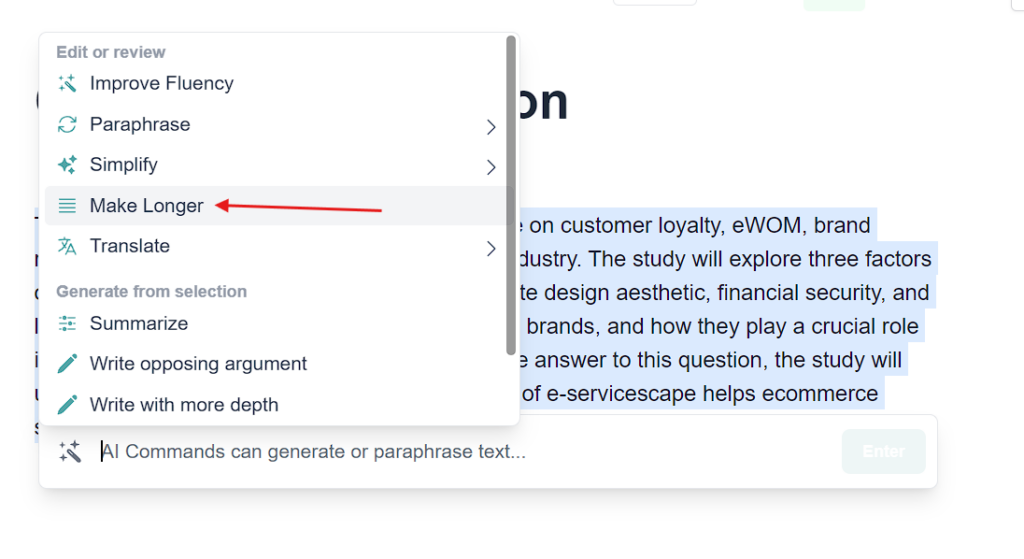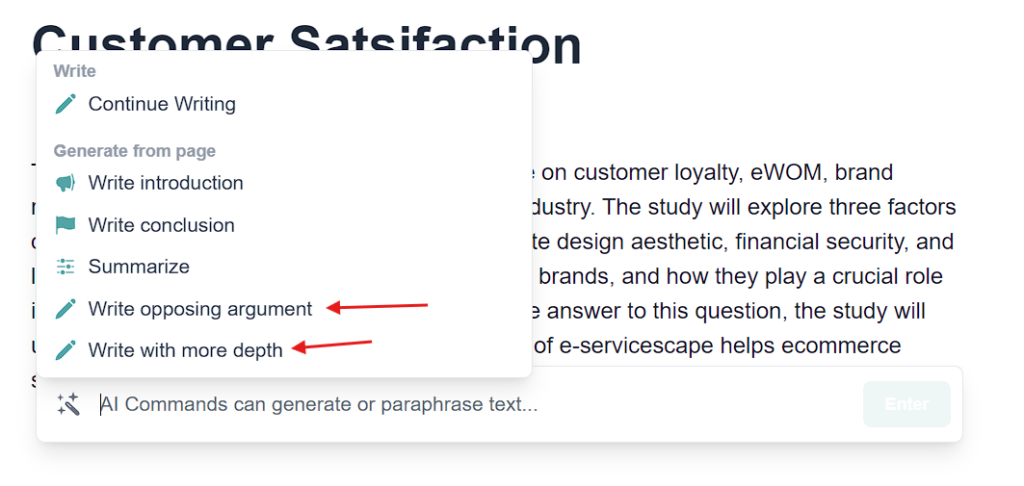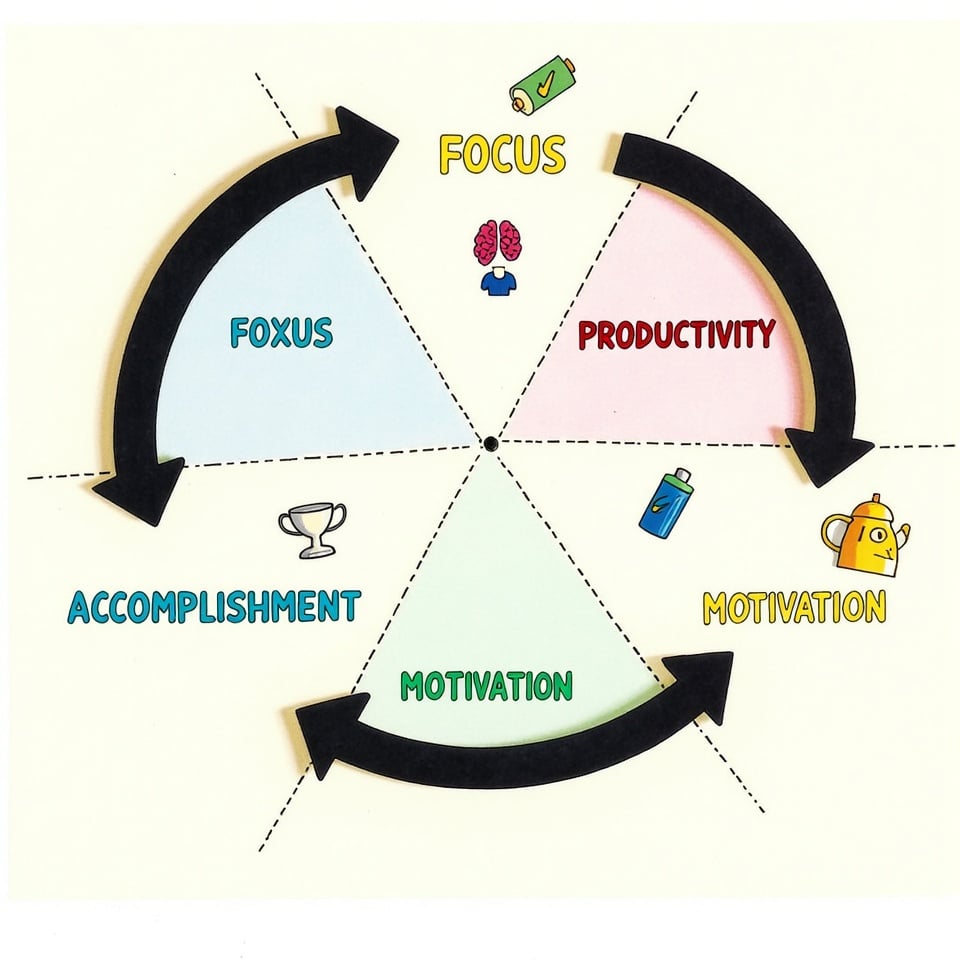Writing a compelling research paper is a fundamental skill crucial for academic success. In this guide, I’ll show you how to write a clear, well-researched, and convincing paper.
I’ll take you through each step of research paper writing. From choosing a topic & writing literature review to a strong conclusion.
By the end of this guide, you’ll know exactly how to write a research paper that will help you get good grades and impress your teachers.
Table of Contents
What is a research paper?
A research paper is a scholarly document that presents original analysis or findings on a specific topic.
Key features include:
- In-depth exploration of a research question or hypothesis
- Comprehensive literature review
- Data collection and analysis
- Contribution of new knowledge or perspectives
Length varies, typically 2,000 to 10,000+ words, depending on academic level and field. Research papers serve to:
- Demonstrate understanding of a subject
- Add to the academic discourse
- Develop critical thinking and writing skills
The format usually includes an introduction, literature review, methodology, results, discussion, and conclusion. Finding research articles and writing a literature review are crucial skills for creating a well-researched paper.
Steps to write a research paper
In this section, we will provide a concise, step-by-step guide on how to write a research paper. We’ll cover the entire process, from selecting your topic to finalizing your paper.
Choose your topic
Picking the right topic is the first step to writing a great research paper. Start by thinking about what you’re interested in and what you’re studying in school. Make a list of ideas that you like and that fit with what you’re learning. Then, pick one small part of a bigger topic to focus on. This will make it easier to do your research and write your paper.
For example, instead of “climate change,” consider “the impact of climate change on coral reef ecosystems.” Assess the feasibility of your topic by ensuring sufficient research articles and resources are available.
Use academic databases and library catalogs to gauge existing literature.
Your chosen topic should be relevant to your course or field of study and contribute something new or offer a fresh perspective. Consider your audience’s interests and consult with your instructor for guidance.
Be open to adjusting your topic as you delve deeper into your research.
Need some ideas to get started?
Here’re: 140+ research topic ideas to choose from or get inspiration.
Conduct preliminary research
Conducting preliminary research is a crucial step in writing a research paper. Begin with broad sources like encyclopedias or textbooks to gain an overview of your topic and identify key concepts.
Use academic databases such as JSTOR or Google Scholar to find peer-reviewed research articles.
Find mix of sources:
- Primary sources: These are the original stories or research.
- Secondary sources: These are articles that talk about the original research.
- Tertiary sources: These are like textbooks that summarize what others have said.
Take notes on what you read. Write down the title, author, and other important details so you can find the article again later.
Evaluate source credibility by considering author credentials, publication dates, and journal reputations. Look for research gaps that could form the basis of your research question. Use keywords effectively to find relevant articles and consider interdisciplinary perspectives.
Track your sources using a citation management tool or organized system. This stage is crucial for learning to find research articles efficiently and write a literature review or research brief.
Be open to new directions; your research might reveal interesting angles you must consider.
Conducting literature review
A literature review is a summary of what other people have written about a particular topic.
A literature review is critical to any research paper. It provides context for your study and demonstrates your understanding of the field.
First, decide scope of your study. What time period, places, or specific parts of the topic do you want to explore? This helps maintain focus and relevance throughout your review.
Next, organize the articles and books you’ve read into groups. You can group them by theme, research methodology, or theoretical approach. This organization will help you identify patterns and trends in the existing research.
As you read each article, do a critical analysis. What are its strengths and weaknesses? Is it relevant to your research question? Look for gaps in what we already know and areas that need more exploration.
Connect the dots between different studies. Show how they relate to each other and your research question. Be fair and present different viewpoints, even if they disagree with your idea. Always give credit to the original authors by citing your sources. Use the citing format (APA, MLA, IEE, Harvard) as per your university guidance.
When you write your review, start with a brief introduction that states your research question. Then, organize your body in a logical way, and end with a summary of what you found and what still needs to be explored.
Only include the most important and relevant studies in your review. If your research spans an extended period, periodically check for new publications to keep your review current.
Organizing research materials
When you’re doing research, it’s easy to get overwhelmed with all the information you’re collecting. That’s why it’s so important to get organized!
First, create a system for storing all your research materials. You can use folders on your computer or cloud storage so you can access your files from anywhere.
Next, find a way to keep track of all your sources. You can use software like Zotero or Mendeley to help you organize your sources and create citations. You can also upload all your PDFs to blainy library, and ask AI assistant any questions you have.
Take notes on what you’re reading, including important points, quotes, and your own thoughts. Always write down where you got the information so you don’t accidentally copy someone else’s work.
Make a list of all your sources, including a summary of what each one says and whether or not it’s a good source. Use colors or tags to highlight important information that relates to different topics.
Keep a record of how you searched for information and what keywords you used. This will help you if you need to find more information later. Use binders or folders to keep track of physical materials, and use sticky notes or highlighters to mark important sections.
Create a timeline to organize your sources in chronological order and see how ideas have developed in your field.
Finally, find a way to keep track of your own thoughts and ideas, and link them to specific sources. Regularly review your materials to make sure they’re still relevant, and get rid of sources that no longer fit your research focus.
Develop a thesis statement
A strong thesis statement is the backbone of your research paper, providing direction and focus for your entire argument.
It’s a single sentence that usually comes at the end of your introduction. It states the main point or idea of your research paper, so readers know what to expect.
To develop an effective thesis:
- Start with your research question and consider the central point your paper aims to address.
- Make your thesis specific and focused, avoiding vague or general statements.
- Ensure it’s debatable — a good thesis presents a claim that someone could argue against rather than simply stating a fact.
While your thesis needs to be specific, it should also be concise. Aim for a single, clear sentence if possible. Your thesis should claim that you can support your research with evidence from your research.
No matter what format you’re using to write your research paper, make sure your thesis matches the way you’ve organized your paper. This will help everything flow together smoothly.
Be prepared to revise your thesis as you delve deeper into your research. Your initial statement might change as your understanding of the topic evolves.
In most research paper formats, the thesis statement appears at the end of the introduction, serving as a bridge to the body of the paper.
Test your thesis by asking yourself: Does it answer the research question? Is it specific enough? Can I support it with the evidence I’ve gathered?
Create an outline
Before you start writing, make an outline. It helps you organize your ideas and make sure your paper makes sense.
Start by writing your main idea (or thesis statement) at the top of your outline. This will help you remember what your paper is about.
Next, break down your paper into smaller sections. These sections might include:
- Introduction (where you grab the reader’s attention and introduce your main idea)
- Body (where you explain your main idea and provide evidence)
- Conclusion (where you summarize your main points and wrap up your paper)
In each section, think about what you want to say and how you want to say it. Make sure you have a clear idea of what you want to write about and how you want to organize your ideas.
Also, think about where you’ll need to use citations (or references) to support your ideas. And don’t worry if your outline changes as you write – it’s okay to make changes as you go along!
Finally, make sure your outline is easy to follow and that each section has a similar level of detail. This will help you write a clear and organized paper.
Consider this basic example:
- Introduction
- Hook: Startling statistics about climate change
- Background: Brief overview of global warming
- Thesis: Human activities are the primary driver of accelerating climate change
- Literature Review
- Historical climate data
- Current climate change models
- Methodology
- Data collection methods
- Analysis techniques
- Results
- Temperature trends
- Sea level rise
- Discussion
- Interpretation of results
- Comparison with previous studies
- Conclusion
- Restate thesis
- Summarize key findings
- Call for action on climate change mitigation
Write your first draft
Once you’ve gathered your research and created an outline, it’s time to write your first draft. This is where you transform your ideas and research into a coherent research paper.
Start with the body of your paper. Use your outline as a roadmap to maintain a logical flow of ideas and ensure you cover all key points.
After writing the body, craft your introduction. Start with an attention-grabbing hook. At the end, write your conclusion. Conclusion should restate your thesis in different words. It should summarize the main points, and provide closure.
Crafting a captivating introduction
The introduction to your research paper is like the opening scene of a movie. It sets the tone for the whole story and makes the reader want to keep reading. A good introduction does four things:
- Introduces the topic
- Provides some background information
- Presents your main idea (or thesis)
- Gives the reader an idea of what to expect from the rest of the paper
Begin your introduction with something that will grab the reader’s attention. This could be a surprising fact, a thought-provoking question, a short story, or a quote from someone important.
For example, if writing about climate change.
You can begin with:
“By 2050, up to 1 billion people could be displaced due to climate change, according to the Institute for Economics and Peace.”
Now provide some background information. This might include a brief history of the topic, what’s happening now, or explanations of key terms.
Narrow down to your specific topic. Explain how your research fits into the bigger picture. This will help the reader understand why your research is important and what they can expect to learn from your paper.
Clearly state your research question to guide readers and set expectations. Then, present your thesis statement – the core argument of your paper. It should be clear, concise, debatable, and specific to your research.
Briefly outline the structure of your paper, acting as a roadmap for readers. Establish the significance of your research by explaining what gap in knowledge it fills or how it contributes to the field.
Keep your introduction concise, aiming for about 10% of your word count. Use present tense for general statements and avoid excessive detail. Consider writing your introduction last to ensure it accurately reflects the content of your research.
Here’s a brief example:
“In the past decade, global temperatures have risen at an unprecedented rate, with 20XX being the hottest year on record. Climate change, once debated, is now recognized as one of humanity’s most pressing challenges. While numerous factors contribute to global warming, human activities, particularly fossil fuel burning, are widely acknowledged as primary drivers. This paper examines: What policy measures are most effective in mitigating climate change? Through analysis of current research and case studies, this study argues that implementing a carbon tax is the most effective policy measure for reducing greenhouse gas emissions in developed countries. The paper will review existing climate policies, analyze carbon tax mechanics and impacts, and compare their effectiveness to alternative measures. Understanding impactful policy interventions is crucial as nations strive to meet Paris Agreement targets and prevent catastrophic climate scenarios.”
Developing the paper’s body
The body of your research paper is where you share your arguments, facts, and analysis in more detail. This part of the paper is like the meat of a sandwich — it’s the most important part and should be well-organized and easy to follow. Use your outline to help you stay on track and make sure your ideas flow in a logical order.
Start each paragraph with a clear topic sentence that introduces the main idea. Then, use evidence from your research to support your idea. This could be:
- Data from a scientific study
- A quote from an expert
- Statistics that help prove your point
For example:
“A study by the World Bank (2020) found that countries implementing carbon taxes saw an average 2% reduction in emissions within the first year of implementation.”
Analyze your evidence by explaining how it supports your argument. Use transitions to ensure a smooth flow between paragraphs and sections. Address counterarguments to strengthen your position and demonstrate critical thinking.
For longer papers, consider using subheadings to break up the text and guide readers. Maintain focus by ensuring every paragraph relates to your thesis. Use varied sentence structure to maintain reader interest and improve readability.
When you use information from other sources in your writing, you want to make it flow smoothly and clearly. To do this, try to paraphrase the information instead of copying it exactly. This means saying the same thing in your own words. You can also introduce your sources with signal phrases like “According to…”, “As [author] says…”, or “As reported by…”. This helps the reader know where the information is coming from. Finally, be sure to explain why the information is important and how it helps support your main idea. This will help you use sources effectively and make your writing stronger and more convincing.
Use appropriate academic language while avoiding unnecessary jargon. Provide context when introducing new concepts and use examples to illustrate abstract ideas. Stay mindful of word limits, typically allocating about 80% of your total word count to the body.
Writing a conclusion for a research paper
The conclusion of your research paper ties together all the threads of your argument and emphasizes the significance of your findings. Begin by restating your thesis, but rephrase it to reflect the depth of understanding you’ve gained through your research.
The conclusion is like the final wrap-up of your whole argument. Start by restating your main idea, but say it in a new way that shows how much you’ve learned from your research. This will help you show the reader that you really understand your topic and that your research has taught you something new and valuable.
For example:
“As demonstrated throughout this paper, carbon taxation emerges as the most potent tool in the policy arsenal of developed nations for combating greenhouse gas emissions.”
In your conclusion, briefly recap main points you made in your paper. But don’t just repeat what you already said. Instead, show how all those points fit together to support your main idea. It’s like building a puzzle – you want to show how all the pieces connect to make a complete picture.
Also, explain why your research is important. What does it mean for others? How does it help us understand something new or solve a problem?
For instance:
“This research underscores the urgent need for policymakers to prioritize carbon pricing mechanisms in their climate strategies, as they offer the most direct and measurable impact on emissions reduction.”
Address any limitations in your study and suggest areas for future research. This shows academic integrity and can inspire further work in the field.
End with a strong closing statement that encapsulates the importance of your work:
“As the clock ticks on climate change, the implementation of robust carbon taxation policies stands as a beacon of hope for meaningful emissions reduction and a sustainable future.”
Write your article conclusion in academic tone. Try to be brief and to the point. A good rule of thumb is to make your conclusion about 5-10% of your total word count.
Consider connecting back to your introduction to create a sense of closure. Provide closure while pointing towards new questions or areas of inquiry your research has revealed.
Citations and references (bibliography)
Citations and references are essential in academic writing. It allows you to give credit to sources, allowing readers to verify claims. Choose a citation style appropriate for your field, such as APA, MLA, or Harvard. Use in-text citations to point to full references in your bibliography.
For direct quotes, use quotation marks and provide page numbers. Paraphrased ideas also require citations. Use block quotes for longer excerpts. Provide a complete reference list at the end of your paper, including all cited sources,
Formats differ for various source types, so consult your style guide. Consider using citation management tools for efficiency. Maintain consistency in your citation style throughout the paper. Use citations to support your arguments, not replace them.
Double-check all citations and references for accuracy. Include DOIs or stable URLs for online sources when available. Proper citation demonstrates academic integrity and engages you in scholarly dialogue.
Revise and edit
Take a break after completing your first draft to gain a fresh perspective.
Review your thesis statement and ensure your paper supports it effectively. Check for logical flow, using transition sentences to connect ideas. Evaluate your evidence and strengthen your argument, addressing potential counterarguments.
Improve clarity by revising awkward phrases and eliminating redundancy. Ensure each paragraph has a clear topic sentence and focuses on a single main idea. Verify citations and references, and review your introduction and conclusion. Check formatting for adherence to the required style.
Proofread carefully for grammar and spelling errors. Considering using digital tools but do not relying on them exclusively. Seek feedback from peers or professors. Review your abstract and title to ensure they accurately reflect your paper’s content.
Write your final draft
After thorough revision, craft your final draft in a fresh document. Begin with a strong introduction that clearly states your thesis. Develop body paragraphs, each focusing on a single main idea supporting your argument. Use smooth transitions between paragraphs to ensure logical flow.
Incorporate evidence effectively, blending quotes and paraphrases. Address counterarguments to strengthen your position. Write a compelling conclusion that summarizes main points. It should reinforces your research’s significance.
Refine your abstract to accurately summarize your paper in 150-300 words. Format consistently according to required style guidelines. Proofread meticulously, checking for errors and clarity. Ensure your reference list is complete and correctly formatted.
Review your title to ensure it reflects your paper’s content and captures interest. Remember to adhere to the appropriate length for your academic level, typically 2,000-5,000 words for undergraduate papers.
Your final paper should clearly state your main idea and support it with good evidence. Pay attention to details so your paper is easy to understand and shows you’ve done good work.
Writing an abstract
An abstract is a 150-300 word summary of your research paper, providing an overview of your work. Write it last to ensure accuracy.
Include the research question, methodology, key findings, and conclusions. Use clear, concise language and avoid references.
Components typically include:
- Background/Context
- Research Question/Objective
- Methodology
- Results
- Conclusion
Be specific, using concrete terms and data. Follow any provided guidelines. Proofread carefully, as the abstract is often the first part read.
Example:
“This paper examines carbon tax effectiveness in reducing greenhouse gas emissions. Analyzing data from 15 countries over a decade, we employ a mixed-methods approach. Results show an average 18% reduction in industrial emissions within five years of implementation and significant shifts in consumer behavior. Challenges include equity concerns for low-income households. We conclude that carbon taxes can be effective, but success depends on careful policy design addressing distributional impacts.”
A well-crafted abstract increases your paper’s visibility and impact.
Formatting your research paper
Here are formatting rules for APA and MLA style:
APA Format:
1. Font: 12-pt Times New Roman or 11-pt Arial
2. Double-space entire paper
3. 1-inch margins, left-aligned text
4. Page numbers in the top right corner
5. Title page: Title, author, affiliation, course info
6. Abstract: 150-250 words
7. Body: Full title at the top, use headings
8. In-text citations: (Smith, 2023) or (Smith, 2023, p. 45)
9. Reference list: New page, hanging indent
You can read more about APA styling here: APA style and grammar guidelines
1. Font: 12-pt Times New Roman
2. Double-space entire paper
3. 1-inch margins, left-aligned text
4. Header: Last name and page number
5. First page: Name, instructor, course, date in top left
6. Title: Centered, one-third down the page
7. Indent paragraphs 0.5 inches
8. In-text citations: (Smith 45) or (“Carbon Tax” 12)
9. Works Cited: New page, hanging indent
Always follow the latest edition guidelines and any specific instructor requirements.
Overcoming writer’s block
Writer’s block can be a significant obstacle when crafting a research paper. It can happen at any time, whether you’re just starting to think of ideas or almost finished writing.
Luckily, there are many ways to get unstuck. You can use special tools like Blainy to help with research and writing.
Writer’s block often stems from perfectionism, fear of criticism, lack of inspiration, or feeling overwhelmed by the task. Recognizing these root causes can help you address them more effectively.
Strategies to overcome Writer’s Block:
Here are few tips you can use to overcome writer’s block.
Freewriting:
- Set a timer for 10-15 minutes and write continuously without worrying about grammar, spelling, or quality. This can help generate ideas and overcome the initial hurdle of getting started.
Break the task into smaller chunks:
- Instead of writing the entire paper simultaneously, focus on completing one section at a time.
Change your environment:
- Sometimes, a change of scenery can stimulate creativity. Try writing in a different location or at a different time of day.
Use mind mapping:
- Visually organize your ideas to see connections and generate new thoughts.
Take breaks:
- Regular breaks can help refresh your mind and provide new perspectives when you return to writing.
Discuss your ideas:
- Discussing your research with colleagues or friends can help clarify your thoughts and generate new ideas.
Leverage AI tools like blainy:
- AI-powered writing assistants can be invaluable in overcoming writer’s block.
Here’s how Blainy can help:
- Finding Research Articles:
- Blainy can help you find articles related to your topic, saving you time and showing you new ideas. This is especially helpful when you’re stuck and need a new way of thinking or more facts to support your point.
- Citation Assistance:
- Proper citation is crucial in academic writing but can be time-consuming and tedious. Blainy can help generate correctly formatted citations. It will allow you to focus on your content rather than getting bogged down in citation details.

- Paragraph and Sentence Expansion:
- If you’re having trouble explaining an idea, Blainy can help. It can suggest ways to add more details to your sentences and paragraphs. This is really helpful when you know what you want to say, but can’t quite find the right words.

- Generating Opposing Arguments:
- When writing a research paper, it’s essential to consider counterarguments. If you’re having trouble coming up with opposing views, Blainy can help. It can give you ideas for what others might say against your point. This can help you think more critically and make your argument stronger.

- Outlining Assistance:
- If you’re not sure how to outline your paper, Blainy can help. It can create an outline for you based on what you’re writing about. This will give you a plan to follow and help you get started with your writing.
- Paraphrasing:
- If you’re having trouble saying something in your own words, Blainy can help. It can give you new ways to say the same thing, so you don’t copy someone else’s work by mistake. This will also help your writing sound smoother and more natural.
Tools like Blainy can be really helpful, but remember that they’re just tools. They can help you think and write better, but you still need to do the thinking and writing yourself. Always check and fix the ideas that the tool gives you to make sure they sound like you and fit what your paper needs.
Presenting your research paper
When you present your research with others, you want to do it in a way that’s easy to understand and interesting to listen to.
Here are some tips to help you:
Know who you’re talking to and what they want to hear. Make a plan for what you want to say and use pictures or charts to help explain your points.
Practice what you want to say so you feel confident. Look at your audience and try to keep them interested. Be ready for them to ask you questions.
Use technology to help you, but don’t let it distract you. Try to relax and wear formal dress. Start and end your presentation strong, and be ready in case something goes wrong.
Make sure you have enough time to say everything you want to say. Look at your audience and show them you’re excited about your research. When they ask you questions, answer them clearly and politely.
Publishing your research
Choose an appropriate journal or conference for your work. Consider scope, impact factor, and reputation. Follow submission guidelines, and prepare a polished manuscript and cover letter.
Navigate the peer review process patiently, addressing reviewer comments thoroughly. Consider preprint servers for quick dissemination. Once published, promote your work through academic networks and conferences.
Be aware of open access options and avoid predatory journals. Collaborate with others, handle rejections constructively. Maintain high ethical standards throughout the process. Continuously learn and improve your publishing skills.
Ethics in research writing
Maintain honesty and transparency in reporting findings and methodology. Avoid plagiarism through proper citation, respect for intellectual property, and using a reliable plagiarism detector to verify originality.
Ensure data integrity and secure management. Obtain informed consent and protect participant privacy when applicable. Treat research subjects ethically, minimizing harm and obtaining necessary approvals. Address potential biases and cultural sensitivities.
Follow responsible publication practices, including ethical peer review. Consider environmental impacts and the ethical use of AI in research. Disseminate findings responsibly, avoiding sensationalism. Stay updated on ethical guidelines in your field and engage in ongoing ethics training.
Writing for different academic levels
When you write about your research, you need to think about who will be reading it. Are you writing for your teacher, a college professor, or other experts in the field? You need to adjust how you write to fit your audience. This will help you get your point across and make sure people understand what you’re saying.
For undergraduate writing, focus on clarity, accessibility, and providing ample context.
When you’re writing for graduate-level students. You need to go deeper into the ideas and think more critically about what others have said. You should also show that you can analyze information and think for yourself.
If you’re writing for the highest level, like a PhD, you need to be an expert in your topic and come up with new ideas. You should also use advanced language that shows you’re a specialist.
When writing for interdisciplinary or general academic audiences. You need to find a balance. You should explain things clearly so they can understand, but still show that you know what you’re talking about.
Remember, you need to adjust how you write based on who you’re writing for. Think about what they already know and what they expect from you. This will help you write in a way that’s just right for them.
Addressing feedback and revisions
When someone gives you feedback on your writing, it’s a chance to make it better. Try to think of it as help, not criticism. Look at the feedback with an open mind and use it to improve your writing.
There are different kinds of feedback. Some is about what you’re saying, some is about how you’re saying it, and some is about small mistakes like grammar or formatting. Focus on fixing the big issues that affect your main points.
Make a plan to fix the things that need improvement. This will help you stay organized and make sure you don’t miss anything important.
When you’re revising, try to make your arguments stronger, your writing clearer, and your structure better. If someone gives you feedback that you don’t agree with, think about why they said it and ask for help if you need it.
Finally, make sure your writing is polished and error-free. This means checking your data, grammar, and formatting. If you’re submitting your writing to a journal, respond to each comment carefully and explain what you’ve changed.
Revising your writing is a chance to learn and improve. Use it to make your next draft even better and to deepen your understanding of what you’re writing about.
Research paper writing in the digital age
The internet has changed the way we do research and write papers. Now we have many tools and resources that can help us, but we also have new challenges to deal with.
With the internet, we can access a lot of information and use AI assistants to help us write and work with others. We can also collect and analyze data in new and exciting ways, and share our findings with others with ease.
However, with all this information available, it can be hard to know what’s true and what’s not. We also have to be careful not to copy others’ work without giving them credit, and make sure we’re using data in a way that’s fair and honest.
To be a good researcher, you need to know how to use digital tools and resources. But you also need to remember the basics of good research. This means thinking critically, being honest, and doing your own work.
The key is to use the internet and AI tools to help you, but not do the thinking for you. You should use these tools to make your work better, not to replace your own ideas and efforts. By doing this, you can create high-quality work that makes a real contribution to your field.
Wrapping up
Writing a research paper is a big job, but it’s not too hard. You can do it one step at a time. First, pick a good topic. Then, do some research and find out more about it. Finally, write down what you learned in a clear and easy-to-understand way. If you follow these steps, you’ll have a paper that you can be proud of!
FAQs
How long should a research paper be?
The length of a research paper can be different depending on what your teacher or assignment asks for. Some papers might be short, while others might be longer. It all depends on what you’re writing about and who you’re writing it for.
However, here are some general guidelines:
- Undergraduate papers: Typically 5-15 pages (1,500-4,500 words)
- Master’s level papers: Usually 20-40 pages (6,000-12,000 words)
- Doctoral dissertations: Often 100-300 pages (30,000-90,000 words)
- Journal articles: Generally 3,000-8,000 words, depending on the journal
How to cite a research paper?
To cite a research paper effectively:
- Identify your required citation style (e.g., APA, MLA, Chicago) based on your field or institution’s guidelines.
- Gather necessary information: author(s), publication year, title, journal name, volume, issue, page range, and DOI or URL.
- Format in-text citations and reference list/bibliography entries according to style rules. Each style has unique formatting for different source types.
- Check a official style guide or a reliable website for examples of how to format your paper. They can show you exactly what to do! Pay attention to punctuation, capitalization, and order of elements.
- Use the same style throughout your whole paper.
What are some effective research paper writing techniques?
- Start with a straightforward research question or thesis statement to guide your work.
- Before you start writing, make a detailed outline. This helps you organize your ideas and put them in the right order. It’s like a roadmap for your paper!
- Try the Pomodoro technique: work for 25 minutes, then take a short break. This helps you stay focused and get more done. It’s like a game to help you stay on track!
- Start by writing a rough draft. Don’t worry too much about making it perfect. Just get your ideas down on paper. You can fix it up later!
- Use topic sentences at the beginning of each paragraph to maintain a clear flow of ideas.
- Use examples and facts to support what you’re saying. This helps prove your point and makes your writing stronger.
- Don’t be done after just one try! Read your work again and again, making changes each time. Check the order of your ideas (is it easy to follow?), what you’re saying (does it make sense?), and how you’re saying it (is it clear and interesting?).
- Read your paper aloud to catch awkward phrasing or errors.
- Use citation management software to keep track of your sources and generate citations quickly.
- Seek feedback from peers or mentors and be open to constructive criticism.
What should a research paper include?
A well-crafted research paper is like a puzzle with all the right pieces in place. To ensure that your research paper is complete and effective, here are the essential elements to include:
- Title Page: A clear and concise title that reflects the content of your paper, along with your name, instructor’s name, and date.
- Abstract: A brief summary (around 150-250 words) of your research paper, including the main points, methodology, and conclusions.
- Introduction:
- A hook to grab the reader’s attention
- Background information on the topic
- A clear research question or thesis statement
- An overview of the paper’s structure and content
- Literature Review:
- A critical analysis of existing research on the topic
- A discussion of the key findings, methodologies, and limitations of previous studies
- An explanation of how your research builds upon or challenges existing knowledge
- Methodology:
- A description of the research design and approach
- An explanation of the data collection and analysis methods
- A discussion of the sampling strategy and population
- Results:
- A presentation of the findings, including any data, statistics, or visual aids
- An explanation of the results, highlighting the key trends, patterns, and correlations
- Discussion:
- An interpretation of the results, relating them to the broader research context
- An explanation of the implications of the findings
- A discussion of the limitations of the study and potential avenues for future research
- Conclusion:
- A summary of the main findings
- A restatement of the research question or thesis statement
- A final thought or call to action
- References:
- A list of all sources cited in the paper, formatted according to the chosen citation style
- Appendices:
- Additional materials that support the research, such as raw data, extra figures or tables, or detailed descriptions of methodologies.







